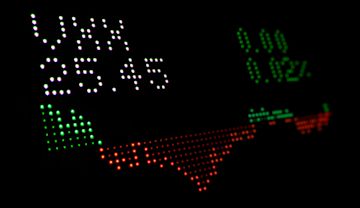Deflation defined
While inflation is characterized by rising prices and the decreasing value of a currency, the opposite happens during deflation. Deflation is a process where prices of consumer goods and services fall and money increases in value. Longer periods of deflation can lead to higher unemployment, a decrease in demand, and a reduction in economic activity. Deflation doesn’t necessarily affect the whole economy. It can also occur in specific sectors of the economy, which is called partial deflation. N26 Free bank account
✓ 100% mobile ✓ No hidden fees ✓ No paperwork ✓ Free virtual Mastercard ✓ Investment tools
Get startedTypes of deflation
There are different types of deflation, depending on the factors that caused them—namely, money supply-side deflation and price deflation.Money supply-side deflation
As the term suggests, money supply-side deflation is when the amount of money supply is decreasing. In other words, there is less money in circulation. This lack of financial resources poses a big risk to the economy. One of the major causes of this type of deflation is a central bank’s decision to reduce the amount of money supply. Price deflation
Price deflation is a gradual decrease in consumer prices for goods and services. This is often caused by the deflationary gap, also known as demand gap, which is characterized by low demand and oversupply. Expecting prices to drop, consumers and businesses hold on to their money rather than spending it. In turn, this reduces the amount of money in circulation—and that can have significant effects not only on the economy but on a whole country. During a period of deflation, the real debt burden of a country increases, which makes it increasingly hard to settle the debt. Is deflation good or bad?
In theory, deflation impacts consumers positively in the short-term because their money has more value and they can afford more. However, in the long-term deflation leads to an oversupply of goods, which causes businesses to produce and sell less, puts jobs at risk, and can fuel a deflationary spiral.Causes of deflation
There are several causes of deflation, and they often are triggered or even accelerated by political or economic factors. Generally, there are four main causes of deflation:- economic factors
- wage deflation
- asset and credit deflation
- political factors
Economic factors include a decrease in consumption and investments. Consumer households start saving money rather than spending or investing it. Supply remains the same while demand is declining, which can lead to a sales crisis. Due to existential fears or negative future expectations, consumers might then save even more money. Businesses can speed up deflation too, for instance by reducing staffing costs or cutting back their investments in new equipment. If demand is significantly low, businesses might even lay off employees or stop production, which in turn worsens deflation. Wage deflation is also caused by a decrease in demand. When demand declines, businesses need fewer employees and have to reduce their labor costs to avoid bankruptcy. Smaller wages leave people with less money to spend, which in turn leads to lower prices, even smaller wages and, in the worst case, rapidly growing unemployment rates. You can see how a simple decrease in demand can turn into a downward spiral pretty quickly!If price deflation is accompanied by an increase in the value of a currency, the debt burden of consumers will grow, too. To avoid the risk of over-indebtedness, banks grant fewer loans—which further decreases the money supply on the market. This is called debt deflation, and it can either cause or accelerate deflation that’s already happening.Political decisions or events are another cause of deflation. When a country starts investing less in the economy and introduces large budgetary cuts, this has an immediate effect on consumer demand. If central banks such as the European Central Bank (ECB) raise their key interest rate without a major reason, deflation is a likely outcome. When the interest rate increases, loans become more expensive and businesses and consumers spend less money. That’s why the ECB would raise the interest rate only if markets are at great risk of destabilization—ultimately, in order to avoid deflation.
Effects of deflation
Once deflation is up and running, it can seriously damage the economy. Businesses stop hiring and, due to a decline in demand, need to let go of employees. Unemployment rises, which further decreases demand because consumers can no longer afford large investments. With businesses and consumers earning less, the government also has less income from taxes to settle their debt. If the government doesn’t take action, deflation can turn into a depression—an economic crisis.Countermeasures against deflation
Until recently, the ECB has followed a zero interest rate policy to avoid deflation. A low interest rate makes loans more affordable and keeps them in demand. Development projects to create new jobs are another measure to fight deflation—this can increase purchasing power and stimulate more consumption of goods and services. Tax reductions can minimize consumers' tax burdens and increase their purchasing power. Foreign exchange control is another countermeasure governments can take: By exchanging foreign currencies for the domestic currency, the money supply increases, which offsets the effects of deflation. Inflation, deflation, stagflation and how they are connected
Depending on how the economy develops in the upcoming months and years, the inflation rate will likely remain above the ECB’s target of 2.0%. If central banks and governments don’t manage to take effective countermeasures, the economy might face stagflation, which is characterized by extremely slow economic growth, or, in the worst case, hyperinflation. If measures are too extreme and the inflation rate falls below 0%, the economy would slide into deflation. According to current projections, though, this is pretty unlikely. The bigger concern is keeping inflation under control, which is why the ECB has raised key interest rates this year. Experts and policymakers will be keeping a close eye on the inflation rate to make sure that these measures are striking the right balance.
Differences between inflation and deflation
Deflation is the opposite of inflation. While inflation is characterized by the decreasing value of money and rising prices, deflation is associated with falling prices and an increase in the value of money. Inflation can easily turn into hyperinflation, a situation where money rapidly loses its value and commodities such as bread suddenly cost €200 rather than €2. Deflation, with a seemingly unending economic downturn, can lead to recession, which in turn can become a depression. Depression is the lowest point of an economic downturn caused by deflation.Why is deflation worse than inflation?
This raises the question: Is deflation worse than inflation, or is it the other way around? Since deflation is characterized by falling prices, it seems to benefit consumers in the short-term. However, in the long-term it can turn into a deflationary spiral and cause serious damage to the economy. A decline in demand for goods and services leads to even lower prices, less spending by consumers and businesses, and a lower supply of money. In response to an oversupply of goods, businesses lower production and lay off employees to save costs. Unemployment rises, the government collects fewer taxes and spending declines further. This curbs economic growth and, in the worst case, leads to a depression. Although there are a number of countermeasures, it isn’t easy to end deflation. A slightly increased inflation rate, on the other hand, is considered healthy, as it indicates economic growth and on-going demand. That’s why governments, economies, and citizens should aim for a healthy inflation rate. Examples of deflation
Germany isn’t currently at risk of deflation. Nevertheless, Germany and other countries such as Japan have experienced deflation periods in the past that had lingering effects on the economy. Here are a few examples of what might happen during deflation:The central bank brings €100 into circulation. A strawberry farm sells strawberries for €10 per kilo. Employees have an hourly rate of €20 and are therefore able to buy two kilos of strawberries after working for one hour. The central bank now decides to decrease the supply of money in circulation to €70. The strawberry farm needs to adjust their prices accordingly and lowers the price to €7 per kilo. If wages remained the same, consumers could afford almost 3.5 kilos of strawberries. However, during a deflation period, employers often adjust wages, which leaves consumers with less money to spend. This accelerates the deflationary spiral, and prices continue to fall.Deflation in Germany
One of the longest and most severe economic crises was the German deflation in the early 1930s. The collapse of share prices on the New York Stock Exchange in the fall of 1929 caused deflation in the Weimar Republic. The Great Crash hit every country in the world, but the USA and Germany were hit the hardest. This economic crisis lasted from 1929 to 1933 and reached its peak in 1932, with almost six million people left unemployed and affected by extreme poverty. Many people lost their trust in the government of the Weimar Republic and turned to the National Socialist German Workers’ Party, which led to Hitler’s rise to power in 1933. Even today, October 25th, 1929 is referred to as “Black Friday” in Europe (in the US, it is called “Black Thursday” and is associated with October 24th, 1929, due to the time difference). Deflation in Japan
Japan is another example of how dangerous the deflationary spiral can be. In the mid 1990s, consumer prices fell rapidly. One of the factors that caused the price drop was the Japanese stock market, which caused an increase of the Nikkei index from 225 to 38,000 points. As a result, real estate and other assets became extremely expensive. The benchmark index then rapidly dropped to 16,000 points between 1990 and 1992, which led to a decrease in the value of money, less consumption, and an oversupply of goods. The Japanese government’s strict monetary and fiscal policy added fuel to the deflationary spiral. It took until 2003-04 for deflation in Japan to come partially under control. The country was slowly recovering from its effects, but then in the financial crisis of 2008, deflation went up again. Since then, Japan has had the highest national debt in the world and is still coping with the impacts of a deflation that began almost 30 years ago.




